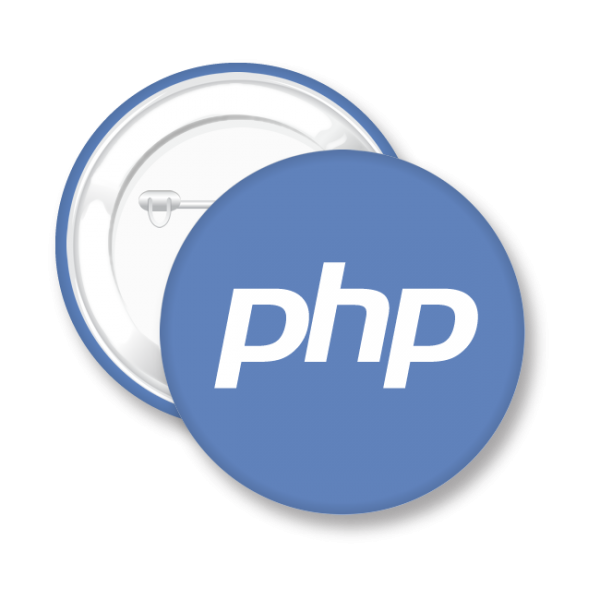Recommended articles about getrandmax
This article collects several articles about the php getrandmax() function. Everyone is welcome to watch and collect 1. Introduction to php generating random numbers from 0 to 1 (decimal): function randomFloat($min = 0, $max = 1 ) { return $min + mt_rand() / mt_getrandmax() * ($max - $min); } Original website: http://www.php.net/manual/en/function.mt-getrandmax.php2. access connections Introduction to writing chat rooms using PHP and ACCESS: access connections: access connections Writing chat rooms using PHP and ACCESS: func.php3 The code is as follows:
##1. Recommended articles about php getrandmax() function

2.
php generates random numbers from 0 to 1 (decimal)

3.
access connections Write a chat room using PHP and ACCESS##Introduction: access connections:access connections Write a chat room using PHP and ACCESS: func.php3 The code is as follows:
4.
PHP Math API method summaryIntroduction:: PHP Summary of Math API methods: Currently the number of APIs is 49. Commonly used calculations (11) min - find the minimum value max — find the maximum value abs — absolute value round — round floating-point numbers ceil — Returns the smallest integer greater than or equal to the specified expression, ceiling function floor — returns the largest integer less than or equal to the specified expression. The floor function intdiv — rounds the division result and returns the quotient. fmod — Returns the floating point remainder of division, returns the remainder is_nan — Determines whether it is a legal value hypot —
##5. Writing a chat room with PHP and ACCESS (10)_PHP tutorial
Introduction: Using PHP Write a chat room with ACCESS (10). The code of func.php3 is as follows: ?php function suiji($max) { srand((double)microtime()*1000000); $x=rand(); $y=getrandmax(); $r=$x/$y* ($max-1); $r=round($r++); return $r; } function StrOcc
6. php generates a random number from zero to 1 (decimal) Number
Introduction: PHP generates random numbers from 0 to 1 (decimal) function randomFloat($min = 0, $max = 1) { return $min + mt_rand() / mt_getrandmax() * ($max - $min); } ? Original website: http://www.php.net/manual/en/function.mt
7. php generates random numbers from zero to 1 (decimal)
Introduction: PHP generates random numbers from 0 to 1 (decimal) function randomFloat($min = 0, $max = 1) { return $min + mt_rand() / mt_getrandmax( ) * ($max - $min); }?Original website: http://www.php.net/manual/en/function.mt-getrand
[Related Q&A recommendations ]:
php - I have some doubts about the use of function `mt_getrandmax`, please give me some advice
The above is the detailed content of Recommended articles about getrandmax. For more information, please follow other related articles on the PHP Chinese website!

Hot AI Tools

Undresser.AI Undress
AI-powered app for creating realistic nude photos

AI Clothes Remover
Online AI tool for removing clothes from photos.

Undress AI Tool
Undress images for free

Clothoff.io
AI clothes remover

Video Face Swap
Swap faces in any video effortlessly with our completely free AI face swap tool!

Hot Article

Hot Tools

Notepad++7.3.1
Easy-to-use and free code editor

SublimeText3 Chinese version
Chinese version, very easy to use

Zend Studio 13.0.1
Powerful PHP integrated development environment

Dreamweaver CS6
Visual web development tools

SublimeText3 Mac version
God-level code editing software (SublimeText3)

Hot Topics
 1677
1677
 14
14
 1431
1431
 52
52
 1334
1334
 25
25
 1279
1279
 29
29
 1257
1257
 24
24
 PHP and Python: Different Paradigms Explained
Apr 18, 2025 am 12:26 AM
PHP and Python: Different Paradigms Explained
Apr 18, 2025 am 12:26 AM
PHP is mainly procedural programming, but also supports object-oriented programming (OOP); Python supports a variety of paradigms, including OOP, functional and procedural programming. PHP is suitable for web development, and Python is suitable for a variety of applications such as data analysis and machine learning.
 PHP's Purpose: Building Dynamic Websites
Apr 15, 2025 am 12:18 AM
PHP's Purpose: Building Dynamic Websites
Apr 15, 2025 am 12:18 AM
PHP is used to build dynamic websites, and its core functions include: 1. Generate dynamic content and generate web pages in real time by connecting with the database; 2. Process user interaction and form submissions, verify inputs and respond to operations; 3. Manage sessions and user authentication to provide a personalized experience; 4. Optimize performance and follow best practices to improve website efficiency and security.
 Choosing Between PHP and Python: A Guide
Apr 18, 2025 am 12:24 AM
Choosing Between PHP and Python: A Guide
Apr 18, 2025 am 12:24 AM
PHP is suitable for web development and rapid prototyping, and Python is suitable for data science and machine learning. 1.PHP is used for dynamic web development, with simple syntax and suitable for rapid development. 2. Python has concise syntax, is suitable for multiple fields, and has a strong library ecosystem.
 PHP and Python: A Deep Dive into Their History
Apr 18, 2025 am 12:25 AM
PHP and Python: A Deep Dive into Their History
Apr 18, 2025 am 12:25 AM
PHP originated in 1994 and was developed by RasmusLerdorf. It was originally used to track website visitors and gradually evolved into a server-side scripting language and was widely used in web development. Python was developed by Guidovan Rossum in the late 1980s and was first released in 1991. It emphasizes code readability and simplicity, and is suitable for scientific computing, data analysis and other fields.
 Why Use PHP? Advantages and Benefits Explained
Apr 16, 2025 am 12:16 AM
Why Use PHP? Advantages and Benefits Explained
Apr 16, 2025 am 12:16 AM
The core benefits of PHP include ease of learning, strong web development support, rich libraries and frameworks, high performance and scalability, cross-platform compatibility, and cost-effectiveness. 1) Easy to learn and use, suitable for beginners; 2) Good integration with web servers and supports multiple databases; 3) Have powerful frameworks such as Laravel; 4) High performance can be achieved through optimization; 5) Support multiple operating systems; 6) Open source to reduce development costs.
 PHP's Impact: Web Development and Beyond
Apr 18, 2025 am 12:10 AM
PHP's Impact: Web Development and Beyond
Apr 18, 2025 am 12:10 AM
PHPhassignificantlyimpactedwebdevelopmentandextendsbeyondit.1)ItpowersmajorplatformslikeWordPressandexcelsindatabaseinteractions.2)PHP'sadaptabilityallowsittoscaleforlargeapplicationsusingframeworkslikeLaravel.3)Beyondweb,PHPisusedincommand-linescrip
 PHP vs. Python: Use Cases and Applications
Apr 17, 2025 am 12:23 AM
PHP vs. Python: Use Cases and Applications
Apr 17, 2025 am 12:23 AM
PHP is suitable for web development and content management systems, and Python is suitable for data science, machine learning and automation scripts. 1.PHP performs well in building fast and scalable websites and applications and is commonly used in CMS such as WordPress. 2. Python has performed outstandingly in the fields of data science and machine learning, with rich libraries such as NumPy and TensorFlow.
 The Continued Use of PHP: Reasons for Its Endurance
Apr 19, 2025 am 12:23 AM
The Continued Use of PHP: Reasons for Its Endurance
Apr 19, 2025 am 12:23 AM
What’s still popular is the ease of use, flexibility and a strong ecosystem. 1) Ease of use and simple syntax make it the first choice for beginners. 2) Closely integrated with web development, excellent interaction with HTTP requests and database. 3) The huge ecosystem provides a wealth of tools and libraries. 4) Active community and open source nature adapts them to new needs and technology trends.




